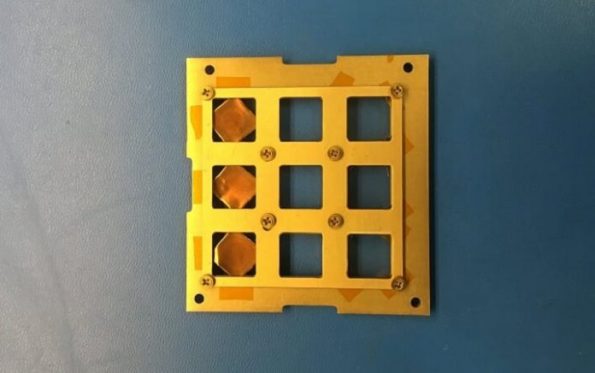Graphene enters the stratosphere

Graphene’s usefulness on Earth has already been established in the last decade. It is now an opportune time to expand its prospects for use in space applications – an area touted as being the most challenging to modern technology – and shift the paradigm of materials science. Space is the final frontier for graphene research, and I believe this is the first time that graphene has entered the stratosphere,”
– Professor Antonio Castro Neto
On 30 June 2018, the spacecraft was launched over the Mojave Desert in the United States. CA2DM has teamed up with US-based aerospace company Boreal Space to test the properties of graphene after it has been launched into the stratosphere. The results could provide insights into how graphene could be used for space and satellite technologies.
During the launch, the spacecraft was sent into suborbital environment, and the graphene material was subjected to harsh conditions like rapid acceleration, vibration, acoustic shock, strong pressure and a wide range in temperature fluctuations. The sample re-entered Earth’s atmosphere after a 71-second flight, parachuting to a landing in the Mojave Desert.
The graphene sample was retrieved on the same day, and the CA2DM team is carrying out tests to assess if its structural properties and stability were affected during the launch and landing. In particular, the team will utilise Raman spectroscopy techniques to detect the presence of defects in the sample.
“If this research collaboration is able to demonstrate that graphene maintains its various properties and features after being launched into suborbital environment, it will open up exciting new opportunities for graphene to be incorporated into technologies suitable for outer space and aerospace missions. Such technologies can include electro-magnetic shielding, efficient solar power generation, and excellent thermal protection,” said Prof Castro Neto.
Read full news here.
Related news:
- Singapore’s NUS conducts suborbital graphene tests for space R&D (Space Tech Asia, 8 August 2018)
- Graphene Tested in Space Launch (Science and Enterprise, 8 August 2018)
- Graphene enters the stratosphere (Phys Org, 8 August 2018)
- Graphene launched into stratosphere to see if it can be used in space missions (Engineering and Technology, 8 August 2018)
- Graphene enters the stratosphere (Tech Explorist, 8 August 2018)
- Graphene Heads for the Stratosphere (R&D Mag, 8 August 2018)
- Graphene enters the stratosphere (Technology Alpha, 8 August 2018)
- Graphene enters the stratosphere (Nanowerk, 8 August 2018)
- Graphene takes flight test for future space missions (The Engineer, 9 August 2018)
- Graphene enters the stratosphere (Chem Europe, 9 August 2018)
- Graphene enters the stratosphere (Science & Technology Research News, 8 August 2018)

